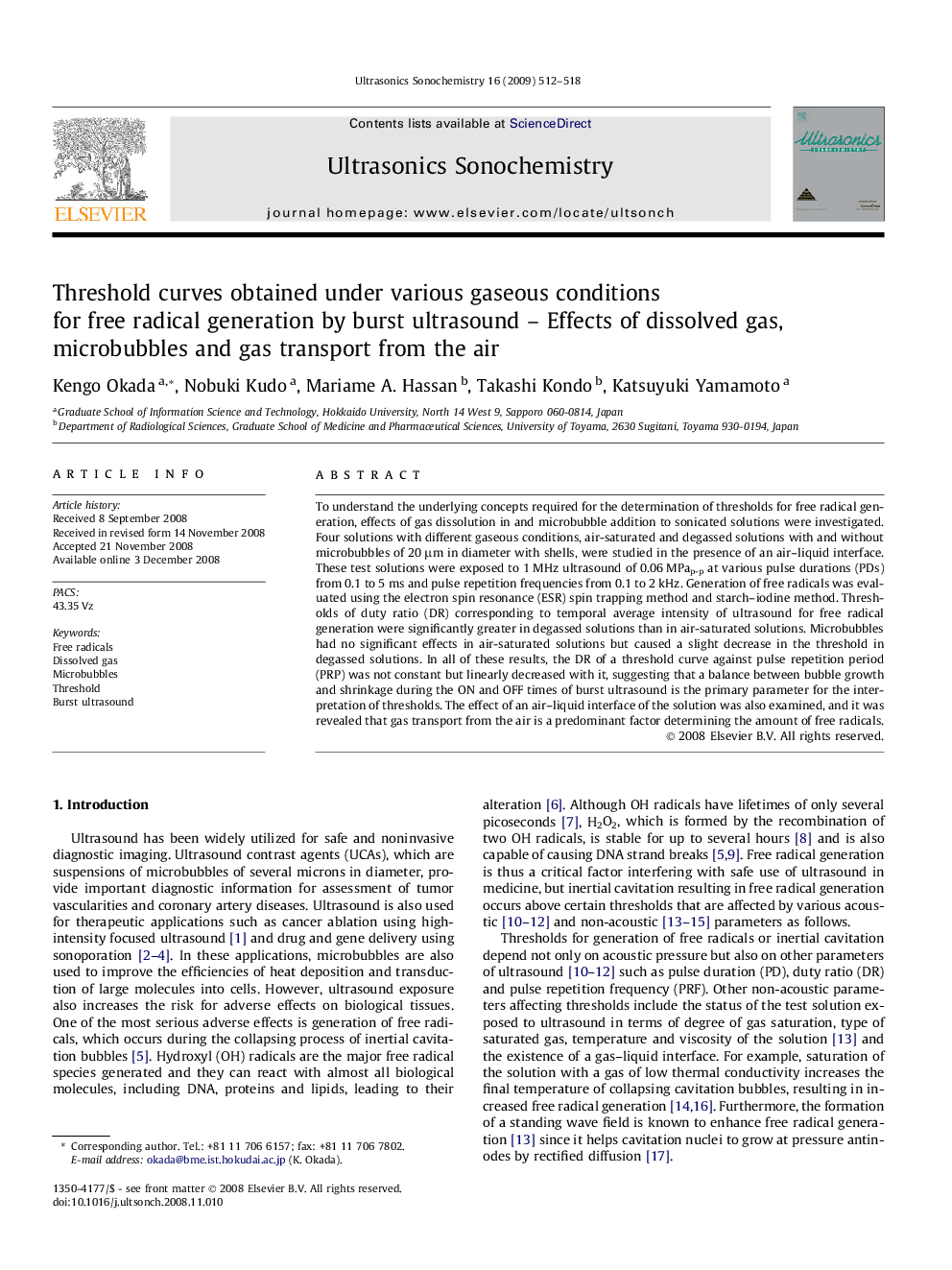| Article ID | Journal | Published Year | Pages | File Type |
|---|---|---|---|---|
| 1269877 | Ultrasonics Sonochemistry | 2009 | 7 Pages |
To understand the underlying concepts required for the determination of thresholds for free radical generation, effects of gas dissolution in and microbubble addition to sonicated solutions were investigated. Four solutions with different gaseous conditions, air-saturated and degassed solutions with and without microbubbles of 20 μm in diameter with shells, were studied in the presence of an air–liquid interface. These test solutions were exposed to 1 MHz ultrasound of 0.06 MPap-p at various pulse durations (PDs) from 0.1 to 5 ms and pulse repetition frequencies from 0.1 to 2 kHz. Generation of free radicals was evaluated using the electron spin resonance (ESR) spin trapping method and starch–iodine method. Thresholds of duty ratio (DR) corresponding to temporal average intensity of ultrasound for free radical generation were significantly greater in degassed solutions than in air-saturated solutions. Microbubbles had no significant effects in air-saturated solutions but caused a slight decrease in the threshold in degassed solutions. In all of these results, the DR of a threshold curve against pulse repetition period (PRP) was not constant but linearly decreased with it, suggesting that a balance between bubble growth and shrinkage during the ON and OFF times of burst ultrasound is the primary parameter for the interpretation of thresholds. The effect of an air–liquid interface of the solution was also examined, and it was revealed that gas transport from the air is a predominant factor determining the amount of free radicals.
